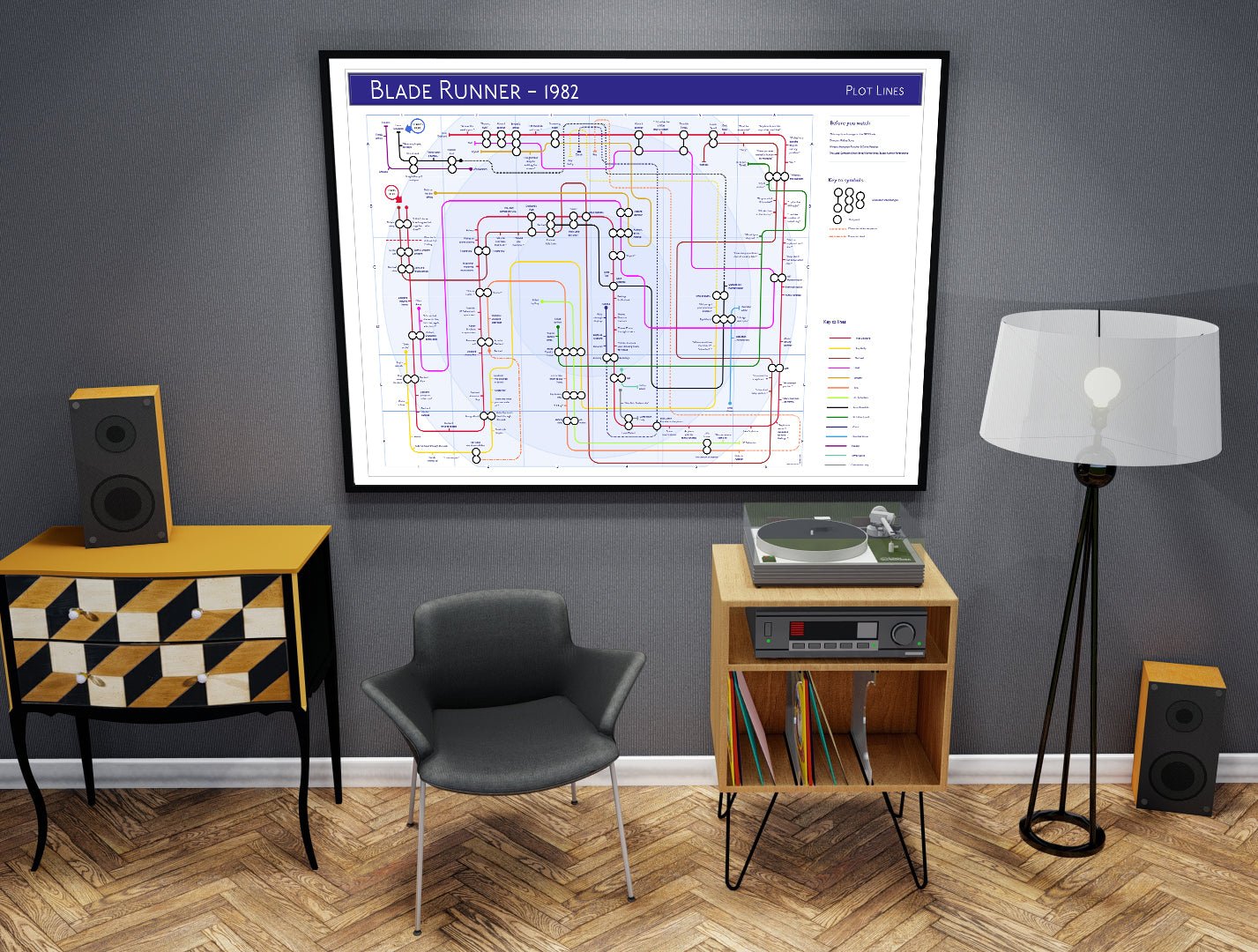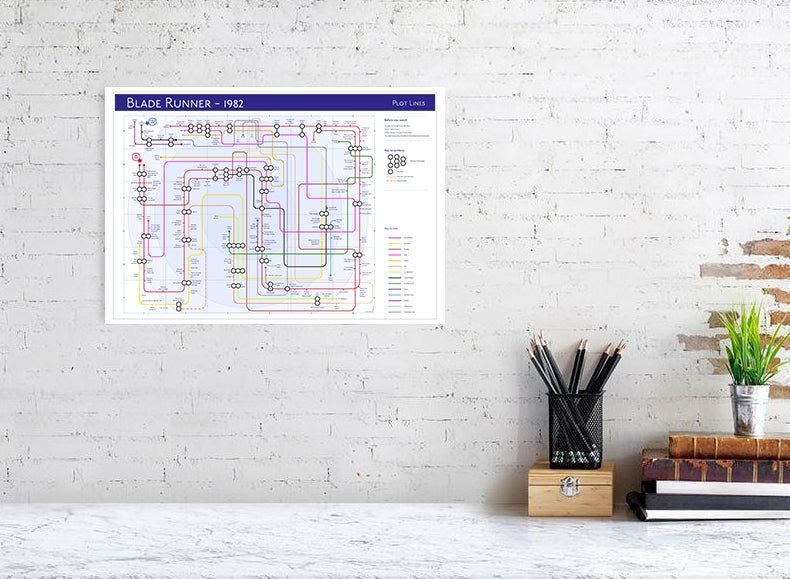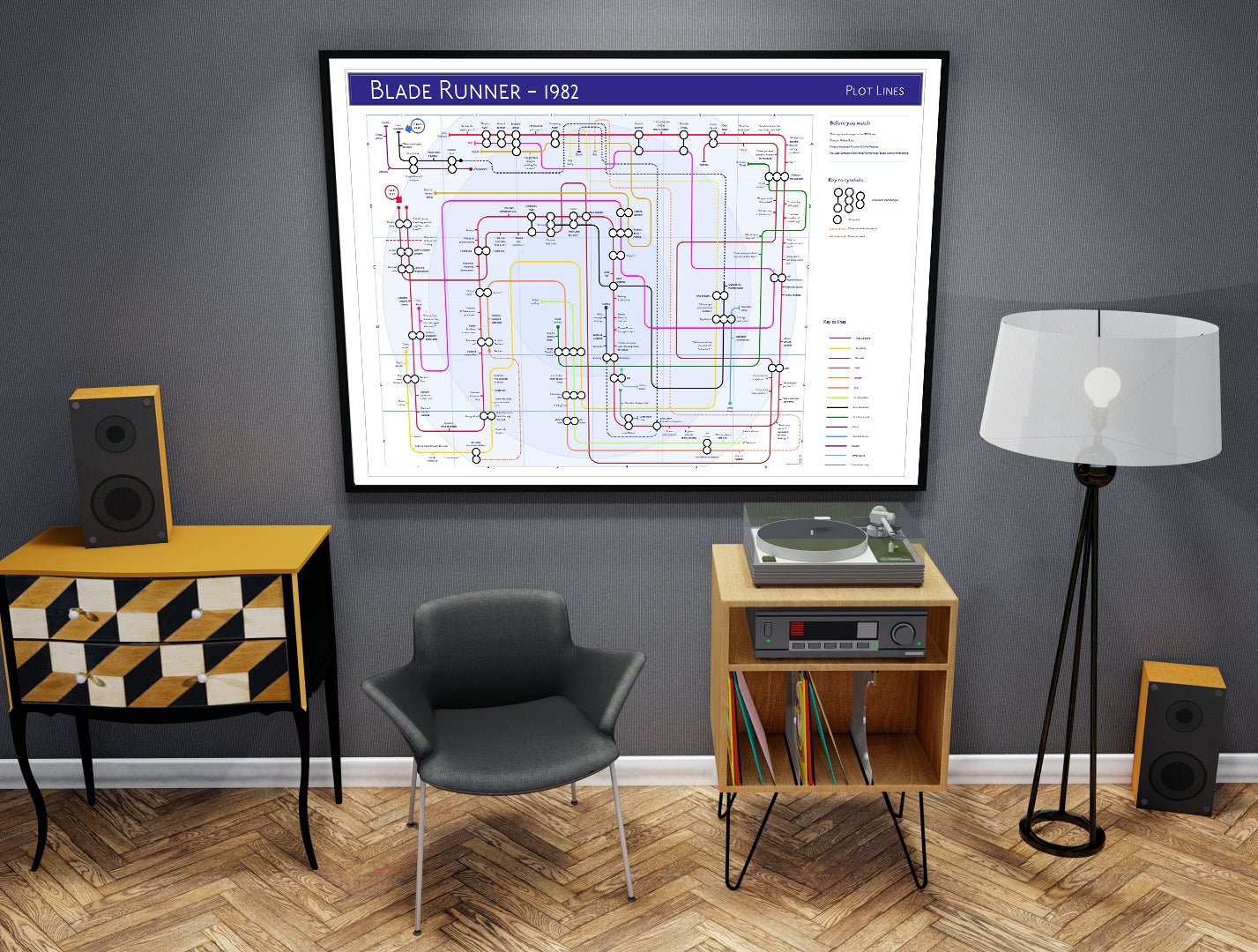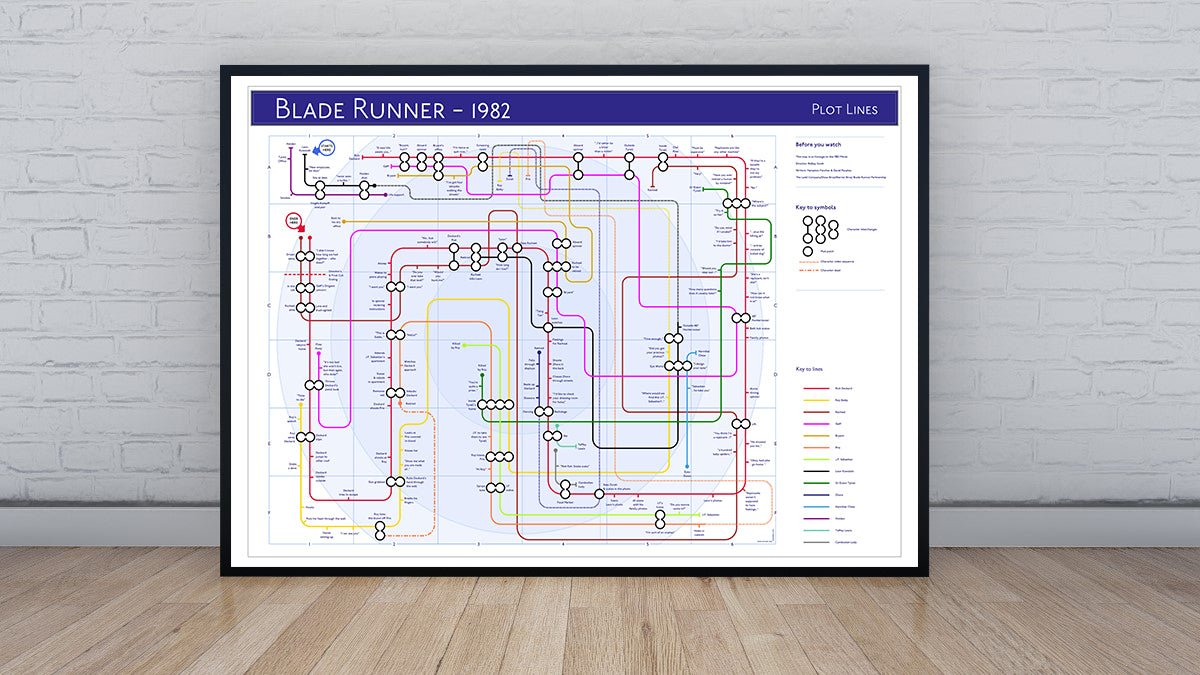BLADE RUNNER (1982) - Film Plot Map
BLADE RUNNER (1982) - Film Plot Map
Couldn't load pickup availability
Blade Runner (1982) Film Plot Tube Map Print
This striking underground-style map reimagines the intricate plot of Blade Runner as a captivating tube map. Each key character and storyline is transformed into its own unique line, with intersections representing the film’s pivotal scenes and character interactions. From Rick Deckard’s mission to retire rogue replicants to the philosophical encounters with Roy Batty, this map visually guides you through the film’s dystopian vision of a futuristic Los Angeles. Perfect for sci-fi enthusiasts, film collectors, and fans of complex visual storytelling, this print captures the essence of Ridley Scott’s sci-fi noir classic.
Key Features:
- Tube Map Visualization: The plot of Blade Runner is depicted as an interconnected underground-style map, capturing the tension and themes of identity, humanity, and technology through the film’s character arcs and key moments.
- High-Quality Print: Available in various sizes and printed on top-grade paper, it’s designed for framing and display to highlight its intricate details.
- Detailed Narrative Structure: Follows the film’s characters and major scenes, charting Deckard’s pursuit and encounters with the enigmatic replicants, making the story come alive in a visually engaging format.
This unique artwork merges cinematic history and graphic design, offering a fresh lens through which to experience Blade Runner. It’s the perfect conversation piece for any sci-fi fan’s collection.
Blade Runner (1982) FAQ
1. What is Blade Runner?
Blade Runner is a 1982 science fiction film directed by Ridley Scott. It is an adaptation of Philip K. Dick's 1968 novel Do Androids Dream of Electric Sheep?
2. What is the plot of Blade Runner?
Set in a dystopian 2019 Los Angeles, the film follows Rick Deckard, a "blade runner" tasked with hunting down and "retiring" rogue androids known as replicants. These replicants, led by Roy Batty, are highly advanced and virtually indistinguishable from humans.
3. Why was Blade Runner controversial upon its release?
Blade Runner received mixed reactions upon release. Some critics found its pacing slow and the story convoluted, particularly in comparison to the action-packed sci-fi hits of the time. The studio's edits and the addition of a voiceover also contributed to the initial mixed reception.
4. How many versions of Blade Runner exist?
There are seven different versions of Blade Runner, due to studio interference and Scott's later revisions. The most significant are the original 1982 theatrical release, the 1992 Director's Cut, and the 2007 Final Cut, the only version over which Scott had complete creative control.
5. What are some of the major themes explored in Blade Runner?
Blade Runner explores complex themes such as the nature of humanity, the ethics of artificial intelligence, corporate power, and environmental decay. The film uses the replicants as a mirror to humanity, questioning what it truly means to be human.
6. What is the significance of the Voight-Kampff test?
The Voight-Kampff test is a fictional interrogation tool used in the film to distinguish replicants from humans by measuring their empathetic responses. This test is central to the film's exploration of what constitutes "humanity".
7. How did Blade Runner influence the cyberpunk genre?
Blade Runner is considered a foundational work of cyberpunk. Its visual style, blending futuristic technology with urban decay, as well as its themes of corporate control, artificial intelligence, and social alienation, helped define the aesthetics and concerns of the genre.
8. Did Blade Runner have a lasting cultural impact?
Despite its initial mixed reception, Blade Runner became a cult classic and is now considered one of the greatest science fiction films of all time. Its influence can be seen in numerous films, video games, anime, and television series. Its dystopian vision and philosophical questions continue to resonate with audiences today.









